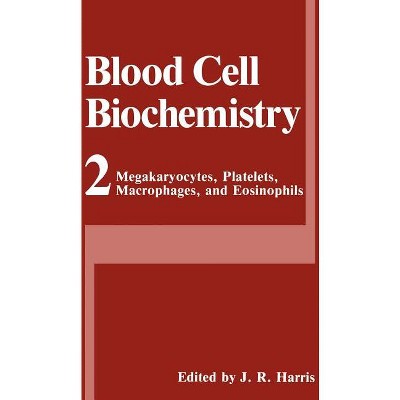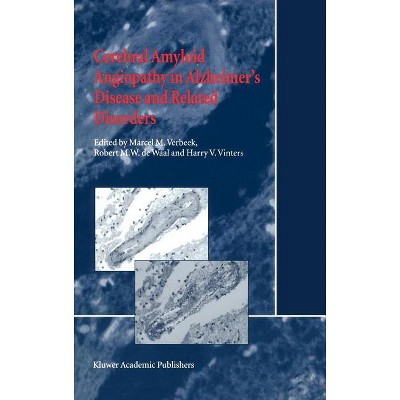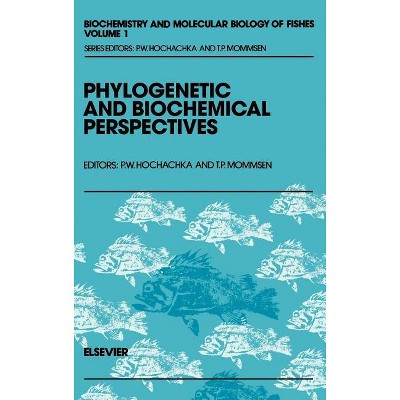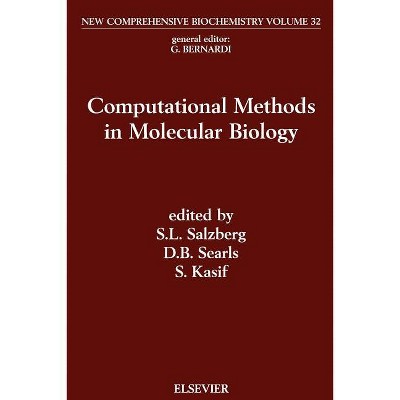Sponsored

Alzheimer's Disease: Cellular and Molecular Aspects of Amyloid Beta - (Subcellular Biochemistry) by J Robin Harris & Falk Fahrenholz (Hardcover)
In Stock
Sponsored
About this item
Highlights
- To understand Alzheimer's disease (AD) is one of the major thrusts of present-day clinical research, strongly supported by more fimdamental cellular, biochemical, immunological and structural studies.
- Author(s): J Robin Harris & Falk Fahrenholz
- 409 Pages
- Science, Life Sciences
- Series Name: Subcellular Biochemistry
Description
Book Synopsis
To understand Alzheimer's disease (AD) is one of the major thrusts of present-day clinical research, strongly supported by more fimdamental cellular, biochemical, immunological and structural studies. It is these latter that receive attention within this book. This compilation of 20 chapters indicates the diversity of work currently in progress and summarizes the current state of knowledge. Experienced authors who are scientifically active in their fields of study have been selected as contributors to this book, in an attempt to present a reasonably complete survey of the field. Inevitably, some exciting topics for one reason or another have not been included, for which we can only apologize. Standardization of terminology is often a problem in science, not least in the Alzheimer field; editorial effort has been made to achieve standardization between the Chapters, but some minor yet acceptable personal / author variation is still present, i. e. P-amyloid/amyloid-P; Ap42/Apl-42/APi. 42! The book commences with a broad survey of the contribution that the range of available microscopical techniques has made to the study of Alzheimer's amyloid plaques and amyloid fibrillogenesis. This chapter also serves as an Introduction to the book, since several of the topics introduced here are expanded upon in later chapters. Also, it is significant to the presence of this chapter that the initial discovery of brain plaques, by Alois Alzheimer, utilized light microscopy, a technique that continues to be extremely valuable in present-day AD research.From the Back Cover
This book contains a survey of present-day research into the biomedical fundamentals of Alzheimer's disease (AD). It contains 20 chapters dealing with widely ranging topics, all of which have a bearing upon the understanding and treatment of AD. Starting with a broad survey of the contribution that the various microscopical techniques (light microscopy, electron microscopy, atomic force microscopy) have made since the seminal light microscopical studies of Alois Alzheimer, the book presents chapters on specialist topics: - transgenic mouse models of AD; the enzymology of amyloid-ß production and degradation; oxidant stress and antioxidant protection; the involvement of metal ions and the influence of chelators; the importance of amyloid-ß oligomers and fibrils, the role of cholesterol in their formation and characteristic binding of the dye Congo red; of the many AD plaque-associated proteins, ApoE4, clusterin and acetylcholinesterase receive individual attention; the effect of amyloid-ß on neuronal membrane calcium channels and membrane fluidity are covered, as are drug interactions, the ß-sheet breaking peptides and the statins that may prevent oligomer/fibril formation in AD; the possible significance of amyloid-ß phosphorylation receives detailed attention.
Overall, the book contains a broad range of current information on cellular, biochemical and structural aspects of amyloid-ß, of direct relevance to Alzheimer's disease.
Shipping details
Return details
Frequently bought together
Trending Non-Fiction

















